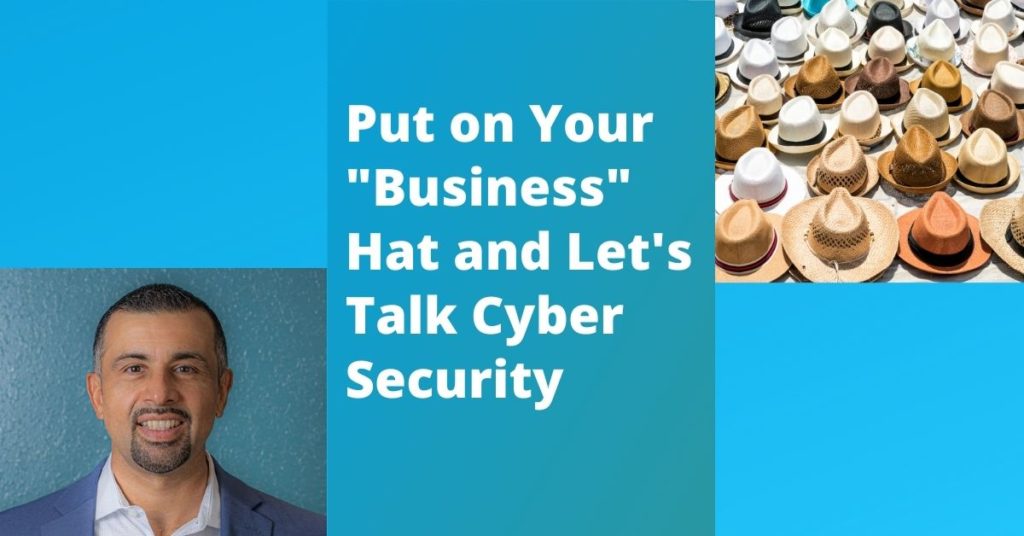
You read that correctly. Cyber security is not a tech issue because it affects more than just the tech part of your business. It impacts every area of your business. It shouldn’t be put on the back burner or dealt with separately from any other business issue. It needs to be central to planning.
Too often, cyber security is seen as a “tech problem” and left to the IT team (sometimes a team of one) to figure out, often without the resources or support to stay on top of the ever-changing cyber threat landscape. But a breach won’t affect only your tech team. And you need every single person in your organization to follow best practices and keep your business network safe.
A Leader’s Guide to Managing Cyber Security for Your Business
Here are some tips for managing cyber security as a business issue (and not a tech problem):
1. Empower your staff.
Train your team on the risks, why they need to follow cyber security best practices and what those practices are. Then trust them to do it, providing ongoing education and support to make it easier.
2. Encourage your staff to bring roadblocks to you; then act on them.
Too often, cyber security is seen as the “bad guy” that keeps people from getting things done. But it doesn’t have to be that way. Encourage your team to let you know when a security procedure is impacting productivity, tempting them to use a less secure workaround. Discuss those issues openly with your IT team and find ways to lessen the impact wherever possible. Sometimes it just takes a little more training. Other times you may have to give someone more permissions. But cyber security works best when it strikes the right balance between locking things down tight and enabling people to get things done.
It’s important that your team trusts you to care about and resolve whatever annoying or frustrating issue they bring to you. That way, they won’t circumvent a security rule and create a weakness in your system for a cyber criminal to take advantage of. That takes education as well as trust, especially in remote and hybrid workplaces.
>>Download our free Phishing Prevention Cheat Sheet to post or share with your team.
3. Make security easier to accept by your staff.
- Recognize their distractions, whether it’s in your office or their home office. Listen to them about these distractions and do your best to empathize with their situation while trying to find a solution.
- Develop policies about trusted devices, then communicate those policies to your staff.
- Share information about the changing threat environment. Reinforce your trust in them to be proactive, diligent and doing their part.
- Establish and reinforce a strong security culture, even in a changing environment.
4. Be proactive.
Don’t wait until a breach happens to activate these procedures. By then, it might be too late. After all, when you have a car accident, no matter how good the repair might be, that car is never the same as before the crash.
The best security is variable, not static. In order to have the best possible outcome, as an employer, you need to encourage open discussions about what is working and what is not.
Think of good cyber security prevention across all your data as being an invisible shield that few can break through. Make sure whatever type of cyber security you employ includes:
- Multi-factor authentication for signing into your system.
- Initial and ongoing cyber security education of your staff, vendors, management team and anyone else who has access to your network. If they know what to look for, it is unlikely they will unwittingly compromise your system.
- Differentiate your data between what is truly sensitive and needs excellent security and what is not. Make sure there are clear lines of accountability for those super sensitive areas.
Lastly, remember you do not have to tackle this problem alone. Internos can guide you and help you to know the best ways to handle managing cyber security in today’s world. Contact us or book a meeting, virtual or in person. There’s no obligation and, if nothing else, you will be empowered to make good decisions.
Use our Managed Service Provider Checklist to Find the Right
Our easy-to-follow checklist can guide you through the process of the best IT services provider for your business.
Are you a first-timer to IT support? Maybe you aren’t happy with your current MSP? This checklist will help you outline and define:
